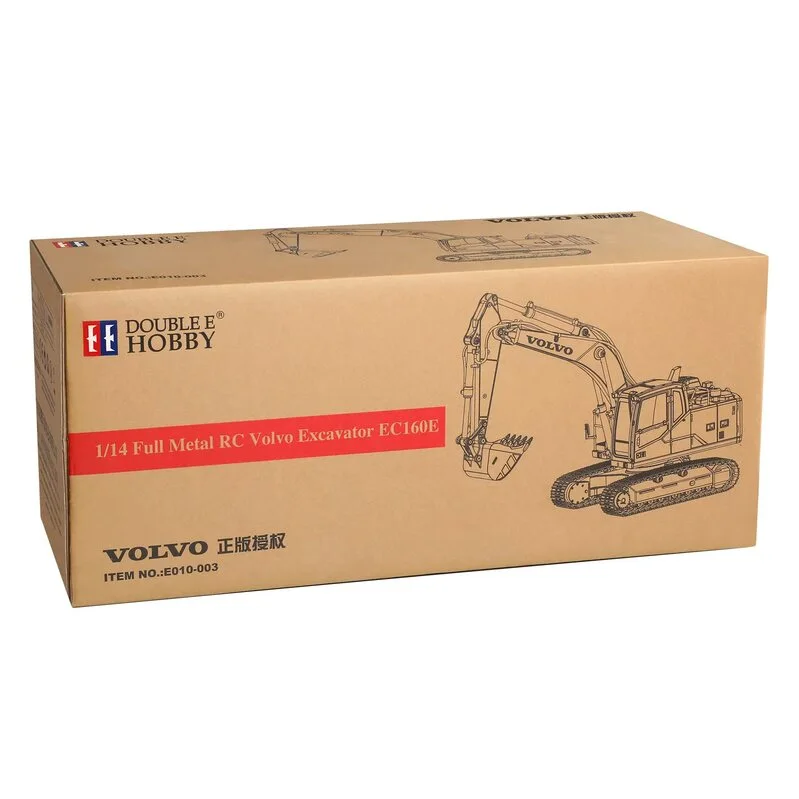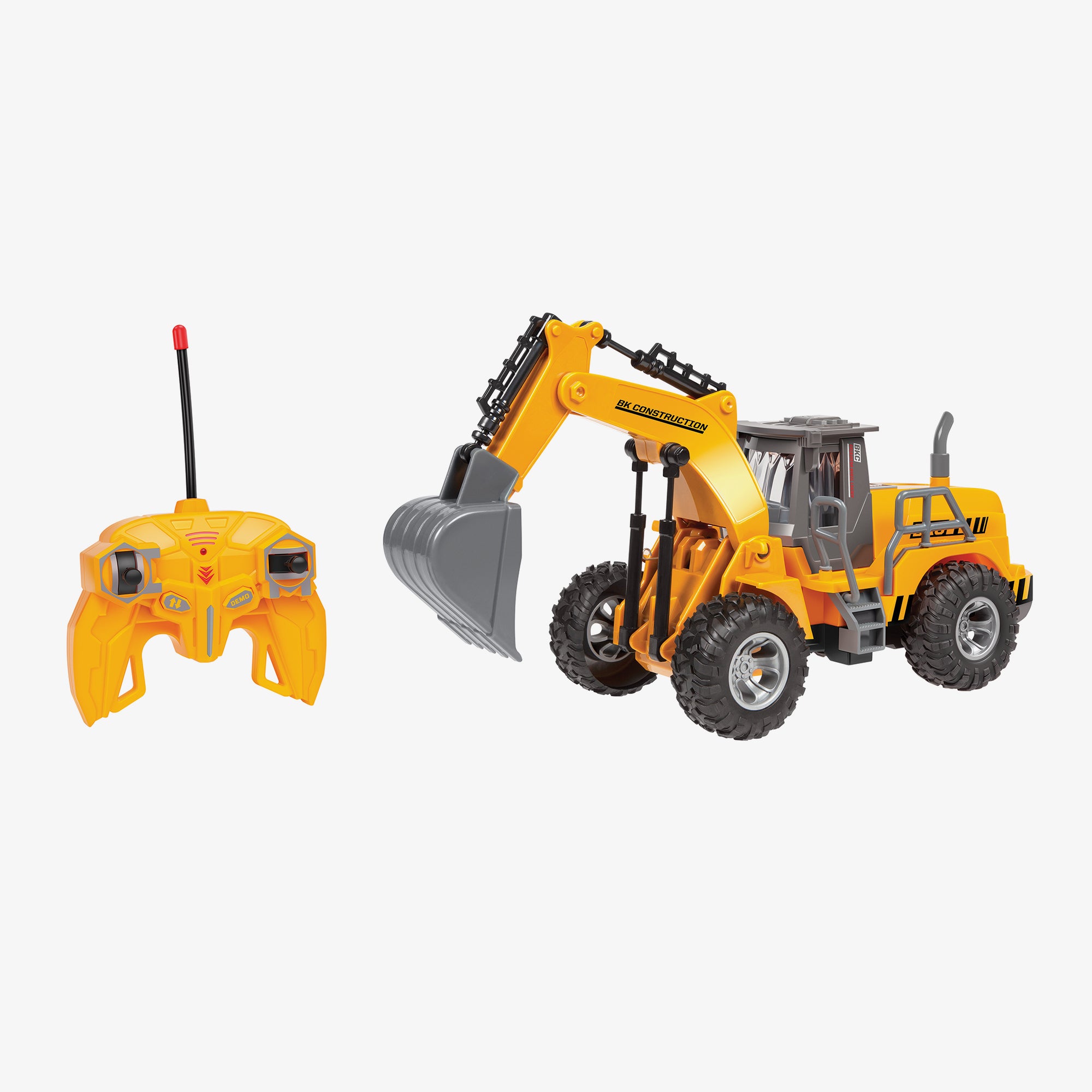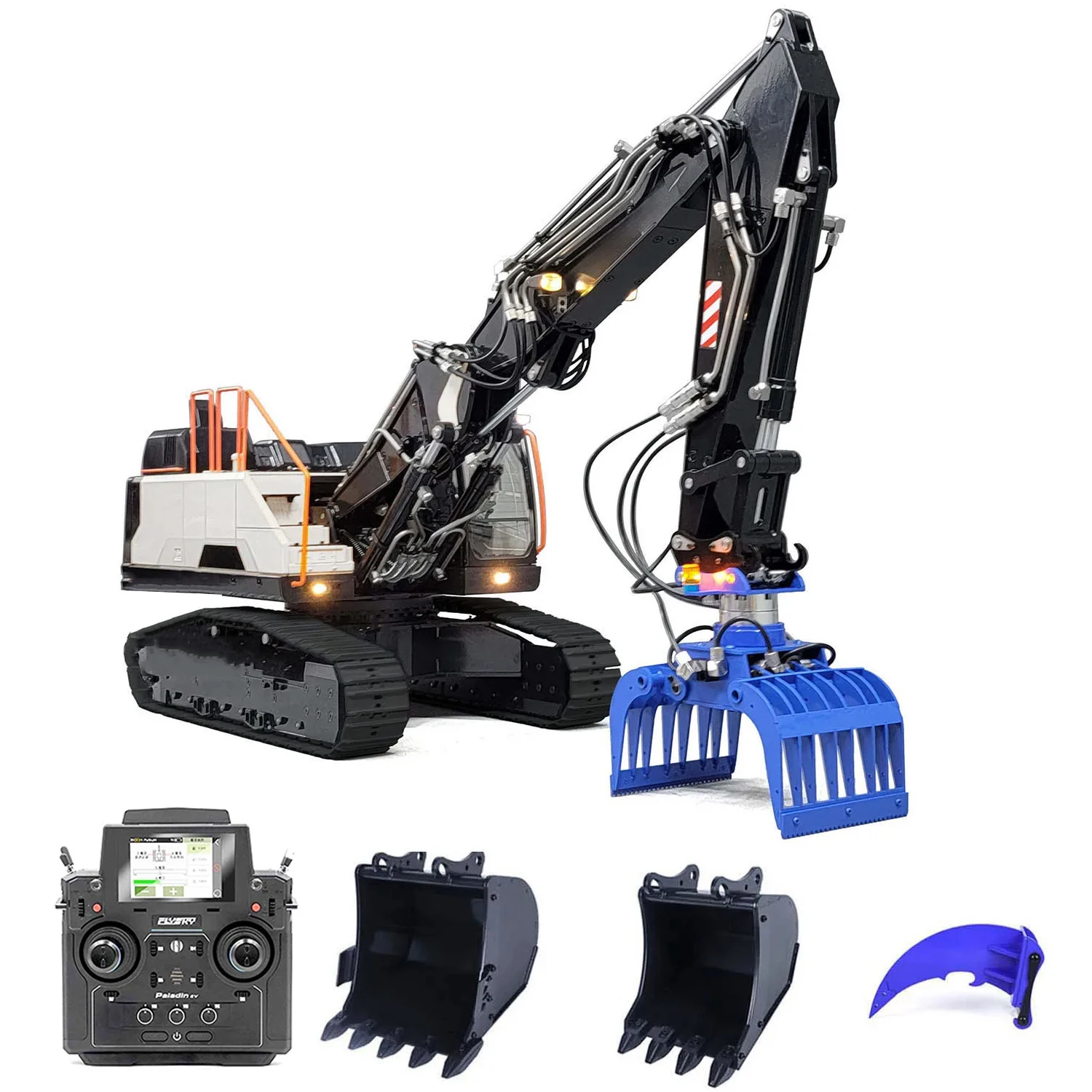The Vital Attributes of Excavator That Make It a Must-Have Tool
Excavators are crucial in the building and landscaping sectors. Their functional add-ons permit a range of jobs, from excavating to demolition. In addition, they flaunt exceptional digging depth and reach, powered by durable engines. Driver comfort and portable styles boost usability in various settings. What absolutely establishes excavators apart are their sophisticated hydraulic systems and durability. Comprehending these features can clear up why they are thought about necessary tools on any type of job website.
Functional Add-ons for Improved Functionality
Excavators are effective equipments on their own, the enhancement of flexible attachments greatly boosts their performance. These accessories transform a conventional excavator into a multi-purpose tool, appropriate for a selection of jobs. Containers, as an example, come in numerous forms and sizes, enabling drivers to dig, scoop, and move products successfully. Hydraulic thumbs can be added for boosted gripping and handling of bulky things, such as logs or rocks.Furthermore, specialized add-ons like augers and breakers enable for drilling and demolition work, broadening the excavator's utility on building websites. remote control excavator. Grapples are an additional option, suitable for moving and arranging particles. This flexibility not just raises productivity but additionally reduces the requirement for numerous devices, conserving time and costs. By furnishing excavators with the appropriate accessories, operators can deal with diverse jobs, making them crucial in the building industry
Superior Digging Deepness and Get To
Excavators are designed with premium digging deepness and reach, permitting them to navigate in limited spaces and access hard-to-reach areas. This capability is important for various building and excavation projects, where standard equipment might fall short. With flexible boom arms and extendable tracks, excavators can easily navigate uneven terrain while preserving stability.The digging deepness can vary significantly amongst designs, typically ranging from 10 to 25 feet, relying on the design and function. This function allows operators to excavate foundations, trenches, and various other deep structures effectively. Additionally, the reach of an excavator permits accurate digging and material handling without rearranging the machine frequently, saving time and labor costs.Ultimately, the premium excavating deepness and reach of excavators make them indispensable for professionals looking for to finish intricate jobs with precision and efficiency. Their flexibility enhances efficiency on work sites, showcasing them as a vital device in modern building and construction.
Powerful Engine Efficiency

Effective engine performance plays a pivotal function in the capacities of an excavator when it comes to effectiveness and efficiency on building and construction websites. A durable engine creates considerable horse power, enabling the equipment to tackle heavy-duty jobs with simplicity - remote control excavator. This toughness translates into faster cycle times, making it possible for drivers to complete tasks a lot more quickly.Additionally, powerful engines give the needed torque to handle tough terrains and differed loads, making certain that the excavator can perform successfully under different conditions. Whether it is lifting, excavating, or relocating materials, the engine's efficiency straight influences the total functional efficiency of the machine.Furthermore, developments in engine technology have brought about enhanced fuel effectiveness, minimizing operational expenses while preserving power outcome. Ultimately, the engine's performance functions as the backbone of an excavator, affirming its standing as an indispensable tool in the building and construction sector
Advanced Hydraulic Equipments

Improved Raising Capability
A substantial improvement in lifting ability can be attributed to advanced hydraulic systems found in modern excavators. These systems utilize high-pressure liquid to produce better pressure, enabling drivers to lift heavier lots effortlessly. The engineering behind these hydraulics guarantees peak efficiency, giving an impressive power-to-weight proportion that improves overall efficiency. As a result, excavators can take on demanding jobs, such as lifting large products or tools, without endangering stability. Additionally, the durable design of hydraulic elements adds to raised sturdiness and reliability, making them appropriate for different building settings. This boosted training ability not just lowers the time needed for projects yet additionally lessens the requirement for extra machinery, showing necessary for both performance and cost-effectiveness in the building and construction market.
Enhanced Accuracy Control
Conventional excavators frequently struggled with accuracy, modern-day hydraulic systems have actually changed control mechanisms, making it possible for drivers to implement tasks with impressive precision. These sophisticated systems utilize symmetrical control shutoffs that permit for smoother and a lot more responsive activities, substantially reducing the margin for error. Operators can currently carefully tune the excavator's movements, making it easier to browse tight areas and handle fragile materials. Boosted feedback systems better notify operators of real-time performance, making certain suitable coordination in between the machine and driver. This raised precision not only improves efficiency yet likewise boosts safety and security on job sites, reducing the danger of accidents. Consequently, modern excavators furnished with advanced hydraulic systems are very useful tools for construction and excavation jobs requiring precise accuracy.
Driver Comfort and Exposure
Driver convenience and presence are crucial parts in the design of modern-day excavators (remote control excavator). Attributes such as ergonomic seat style, enhanced presence options, and reliable control layouts greatly improve the driver's experience and efficiency. Prioritizing these facets warranties that drivers can find work efficiently and securely in different conditions
Ergonomic Seat Layout
Comfort and visibility are vital in excavator design, with the ergonomic seat playing a crucial role in boosting the driver's experience. An ergonomic seat is engineered to support the driver's body, decreasing fatigue throughout long hours of operation. Adjustable features, such as seat height, back-rest angle, and back support, deal with specific preferences and advertise suitable pose. These adjustments boost comfort and make it possible for the driver to maintain concentrate on tasks without discomfort. In addition, a properly designed seat can offer much better side support, enabling smoother maneuvering when the excavator functions. This thoughtful style not just improves productivity yet additionally adds to general safety, making certain that drivers can perform their obligations efficiently and efficiently.
Boosted Visibility Functions
The design of an excavator expands past just the seat, with improved visibility attributes playing a considerable duty in operator comfort and general safety. Big windows and tactically located mirrors provide drivers with a clear view of their environments, lessening blind areas. This style consideration permits much better spatial understanding, which is important in hectic job environments. In addition, lots of excavators include rearview cams and progressed monitoring systems that assist operators in steering limited spaces. The assimilation of these presence includes not only promotes security yet additionally reduces operator exhaustion by allowing less complicated tracking of workplace. Ultimately, enhanced visibility contributes to a lot more efficient operations and assists assure that excavators can do their jobs successfully and safely.
Control Design Effectiveness
While handling facility work websites, a reliable control design greatly improves both driver convenience and presence. A properly designed control configuration guarantees that operators can access important functions with minimal effort, minimizing tiredness during long hours. Ergonomic joystick positionings and user-friendly switch plans enable for seamless procedure, allowing operators to preserve focus on the job available. Furthermore, clear exposure of both the workplace and the control panel is crucial for safety and accuracy. Modern excavators typically incorporate flexible seating and control setups to accommodate numerous driver preferences, even more boosting convenience. Inevitably, a thoughtfully made control layout not just enhances performance yet additionally fosters a more secure working environment by allowing drivers to respond promptly to transforming conditions.
Compact Layout for Urban Environments
As urban building websites typically face area restraints, a small layout ends up being important for image source excavators running in these environments. These makers are engineered to browse limited rooms, enabling efficient ability to move in jampacked work websites. A decreased impact allows them to work carefully to existing structures, reducing disturbance and optimizing productivity.The portable layout frequently consists of much shorter tracks and a tighter transforming span, facilitating operation in narrow streets and constrained areas. Additionally, light-weight materials contribute to reduce of transportation, making it less complex to move the excavator from one place to another within the metropolitan landscape.Additionally, lots of portable excavators are equipped with features such as flexible attachments and extendable arms, Discover More Here improving their functionality while maintaining a little dimension. This adaptability enables drivers to deal with a variety of jobs, from excavating to demolition, all while suitable seamlessly into the restrictions of metropolitan settings.

Resilience and Upkeep Considerations
Longevity stands as a crucial consider the performance and long life of excavators, especially in demanding city settings. These devices go through strenuous conditions, including differing soil kinds, severe temperatures, and high-frequency use. Top notch materials and durable construction are needed for ensuring that excavators can withstand these difficulties without jeopardizing functionality.Regular upkeep is equally vital in preserving resilience. Set up assessments, timely oil changes, and the replacement of worn components add substantially to an excavator's lifespan. Operators needs to also focus on hydraulic systems, tracks, and undercarriages, as these components often bear the brunt of wear and tear.Investing in long lasting excavators with considerable maintenance strategies enhances integrity and minimizes downtime, inevitably leading to raised efficiency on construction websites. Understanding the interaction between toughness and maintenance is vital for any person thinking about the acquisition of an excavator for city projects.
Frequently Asked Inquiries
Just How Do Excavators Compare to Various Other Construction Tools?
Excavators attract attention among construction equipment as a result of their adaptability, making it possible for tasks such as grading, training, and excavating. Compared to others, their hydraulic capacities supply higher efficiency and power, making them indispensable on different job sites.
What Security Includes Are Consisted Of in Modern Excavators?
Modern excavators include various safety and security features, consisting of rollover protection systems, alarm systems, and advanced visibility improvements. These components function together to reduce dangers, ensuring operator safety and security while boosting performance on building and construction sites and other demanding settings.

Can Excavators Be Utilized in Winter Months Conditions?
Excavators can undoubtedly be used in winter months problems, supplied they are outfitted with suitable wintertime attachments and safety measures are taken. Correct upkeep and modifications enhance their efficiency, guaranteeing efficient procedure regardless of challenging climate situations.
What Is the Ordinary Life Expectancy of an Excavator?
The ordinary lifespan of an excavator normally varies from 7,000 to 10,000 hours of operation. This period can greatly rely on maintenance methods, running conditions, and the specific model's resilience and style features.
How Do I Pick the Right Excavator Dimension for My Job?
Choosing the appropriate excavator size involves examining task range, site conditions, and product kinds. Take into consideration elements like reach, depth requirements, and weight capability to assure maximum performance and safety throughout operation. Dimension issues substantially in task success. Furthermore, the reach of an excavator enables for specific digging and product handling without repositioning the equipment often, saving time and labor costs.Ultimately, the superior digging depth and reach of excavators make them important for experts seeking to complete complicated tasks with precision and efficiency. Comfort and presence are vital in excavator design, with the ergonomic seat playing a crucial duty in enhancing the operator's experience. The style of an excavator expands past just the seat, with boosted presence functions playing a significant duty in operator comfort and overall safety and security. Modern excavators commonly include flexible seats and control setups to accommodate numerous driver preferences, further boosting convenience. Lightweight materials add to ease of transport, making it simpler to move the excavator from one location to one more within the metropolitan landscape.Additionally, lots of compact excavators are geared up with functions such as functional attachments and extendable arms, enhancing their capability while keeping a small size.